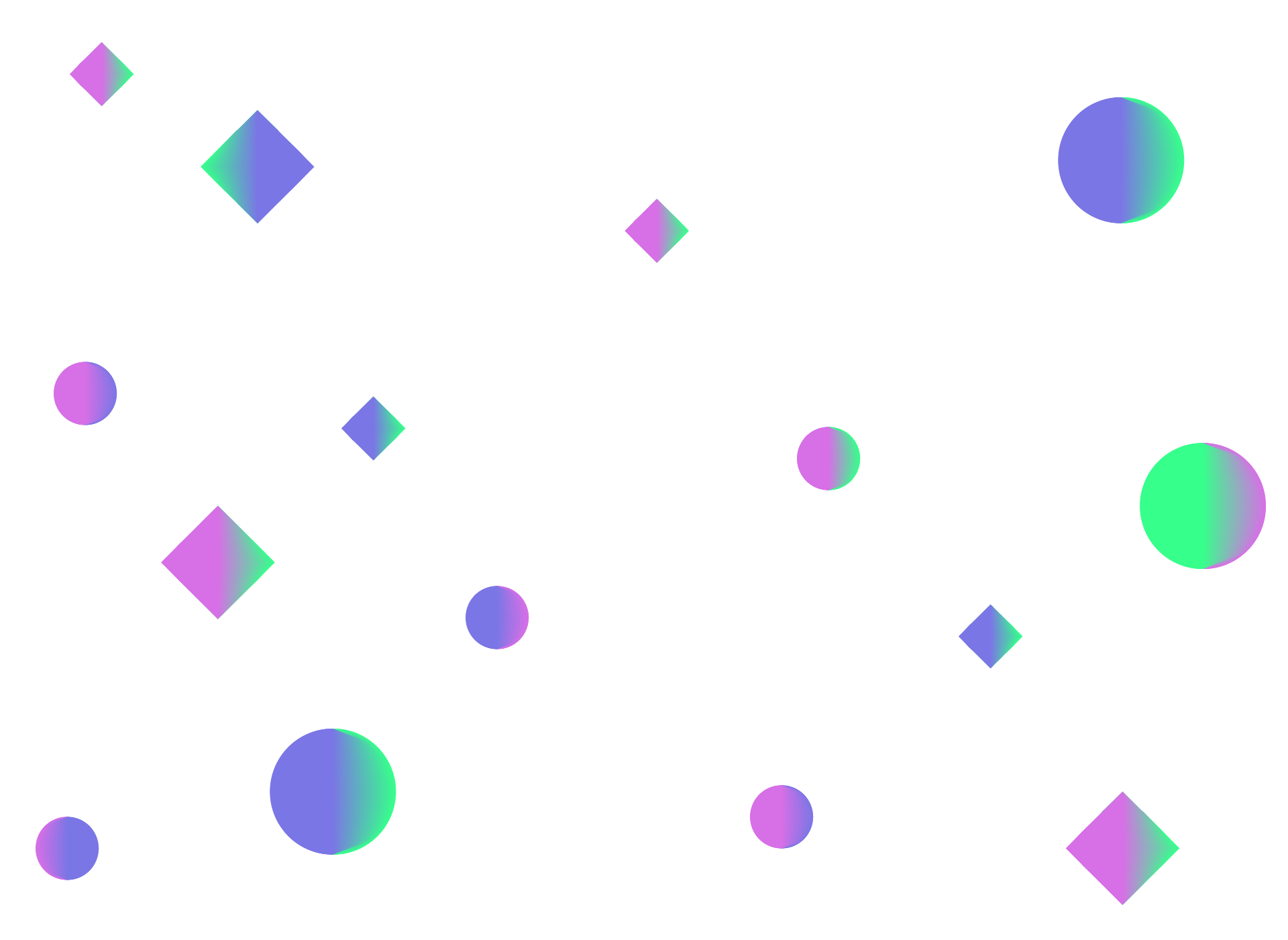PORTFOLIO | ITCH.IO | LINKEDIN
- Jed-Angelo Q. Segovia is a US-born Filipino designer, writer, and illustrator. His love of comics and satire has led him to specialize in playful but critical and emotionally provocative work. He has made art, graphic design, and feature articles for a television network, newspaper, and magazines over a media-driven career. His latest work has been showcased in Parsons Playtech and Immersive Storytelling Symposium, and will appear in the 2017 3D Web Technology conference in Brisbane and Singapore. He received his BFA in Information Design from Ateneo de Manila University in Quezon City, Metro Manila.
His MFADT thesis will be showcased at the 2017 Games For Change Festival.
Pusher: Philippine Extrajudicial Killings Game, All Ages
Bring home the Philippine War on Drugs.
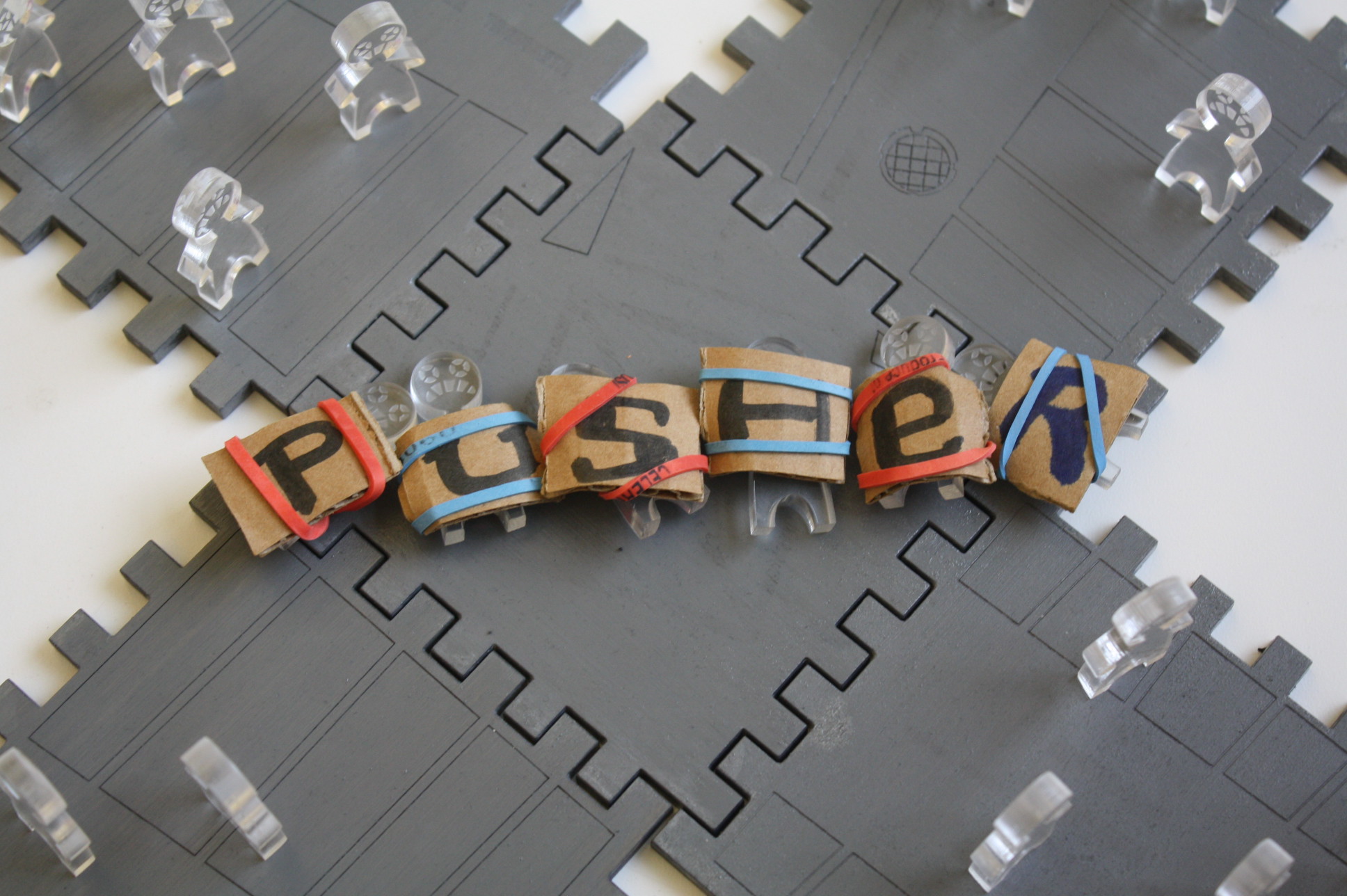
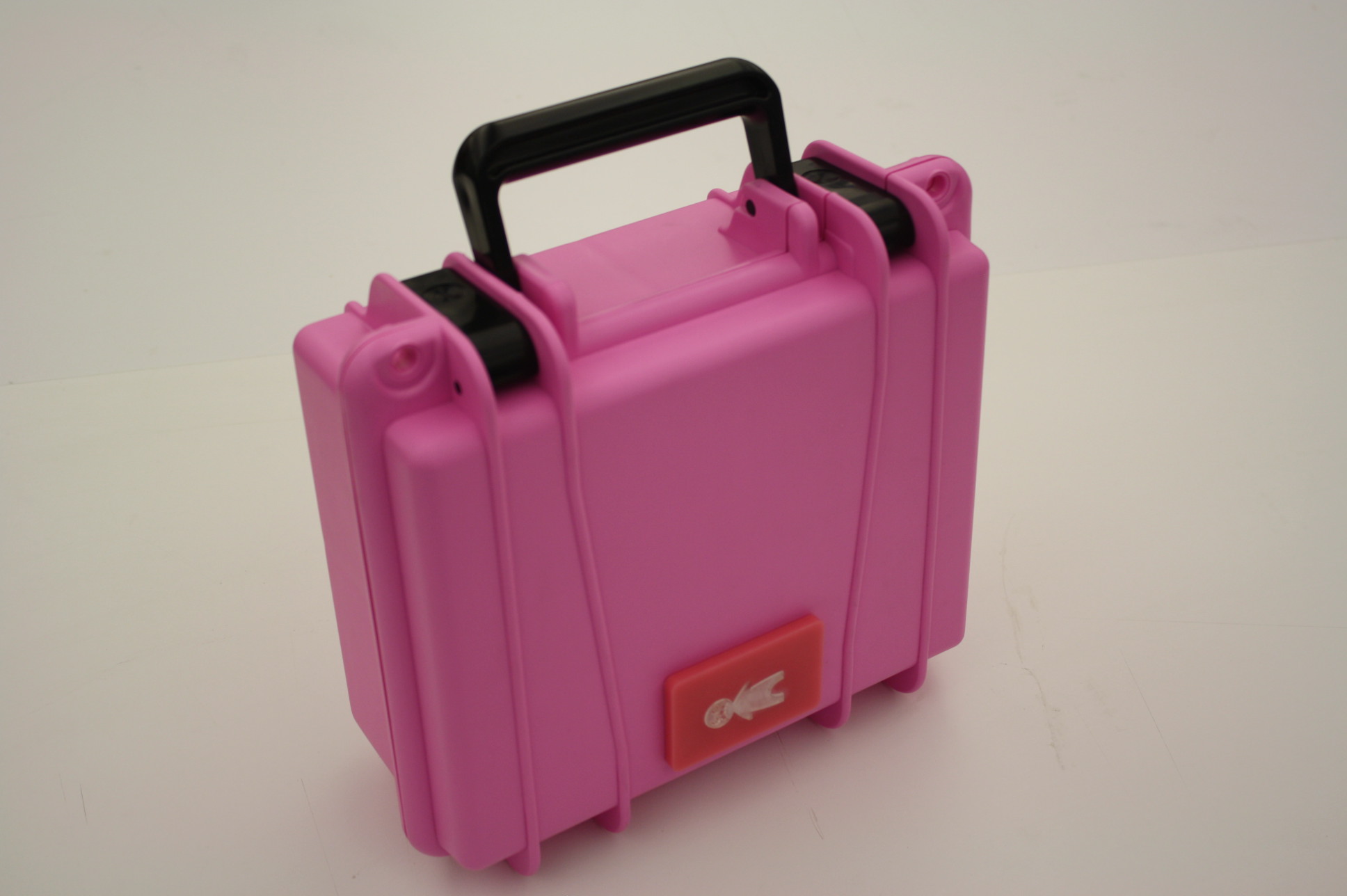
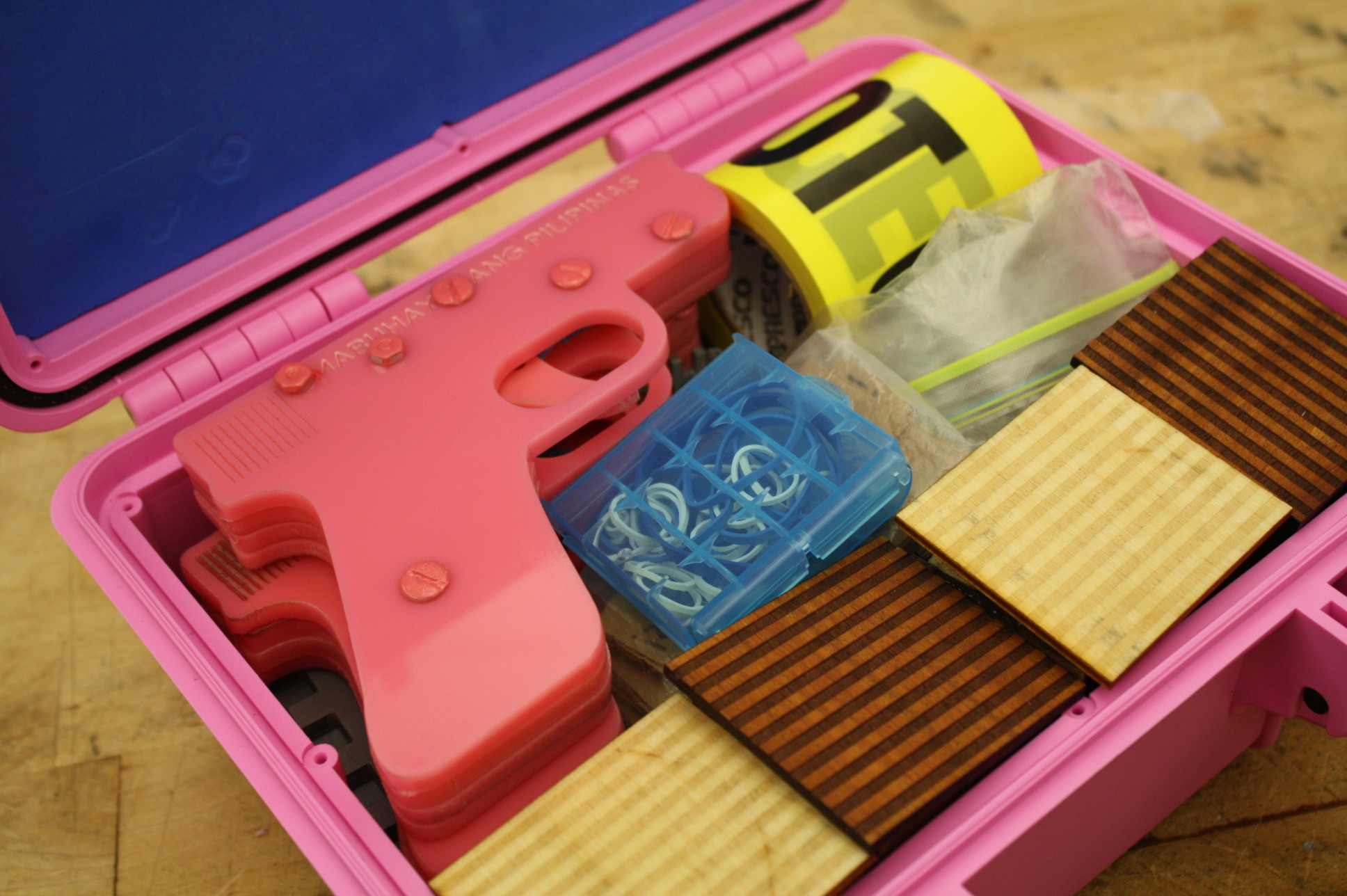
-
-
Pusher is a children's tabletop game where players kill drug addicts, drug dealers, or drug “pushers” and dump them in the street.
-
On May 10th, 2016, newly-elected Philippine President Rodrigo Duterte began a War On Drugs by urging police and citizens to kill drug addicts, drug dealers, and drug “pushers.” Summary executions and vigilante killings exploded in the Philippines. The administration has faced accusations of extrajudicial killings, human rights violations, abandonment of due process, and targeting poor people. The administration’s First 100 Days earned a 78% approval rating. The death toll is 7,000 people and climbing.
Out of this culture of violence comes Pusher.
Pusher gives players guns and a tiny prison to eliminate “pushers.”
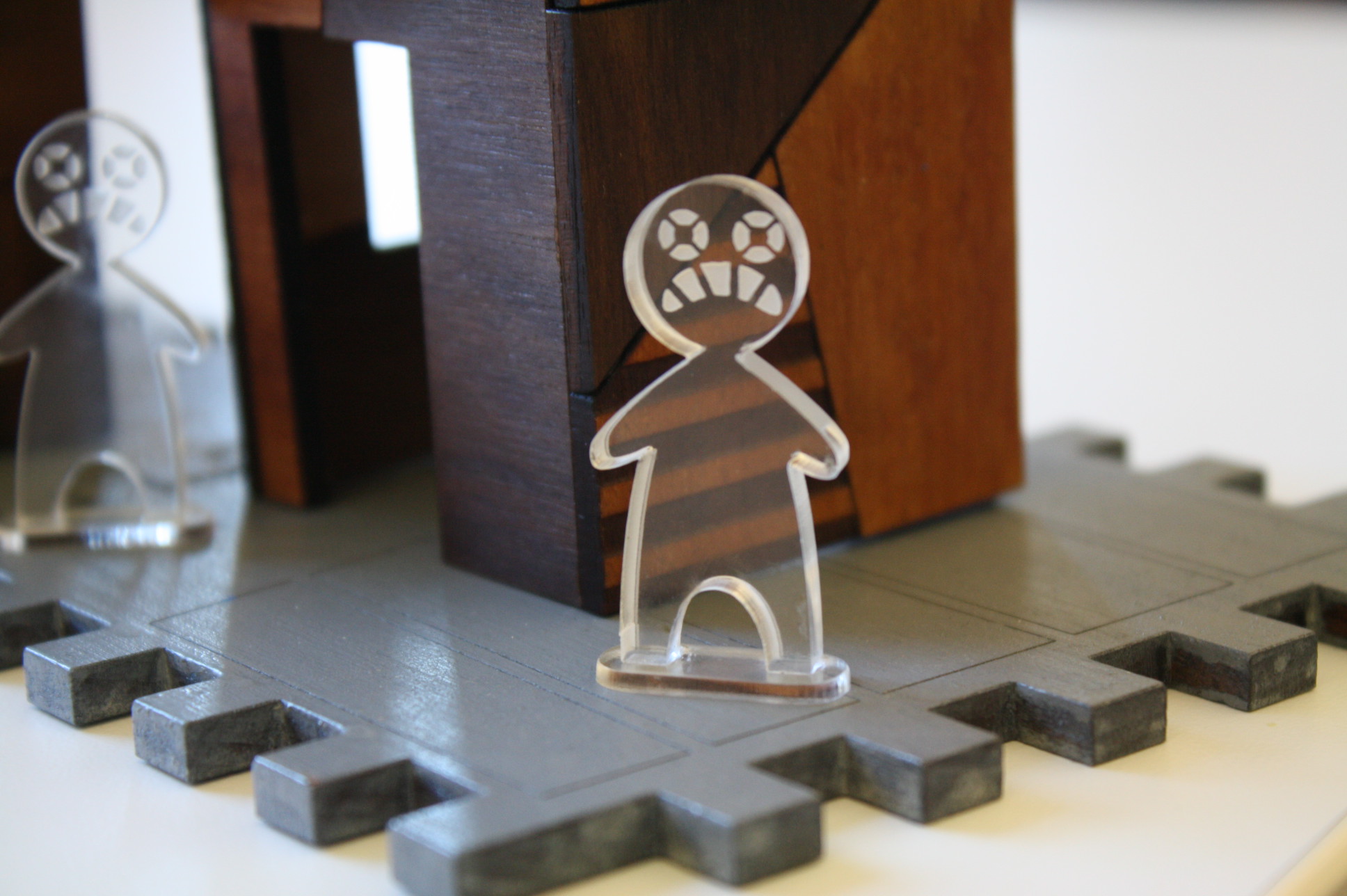

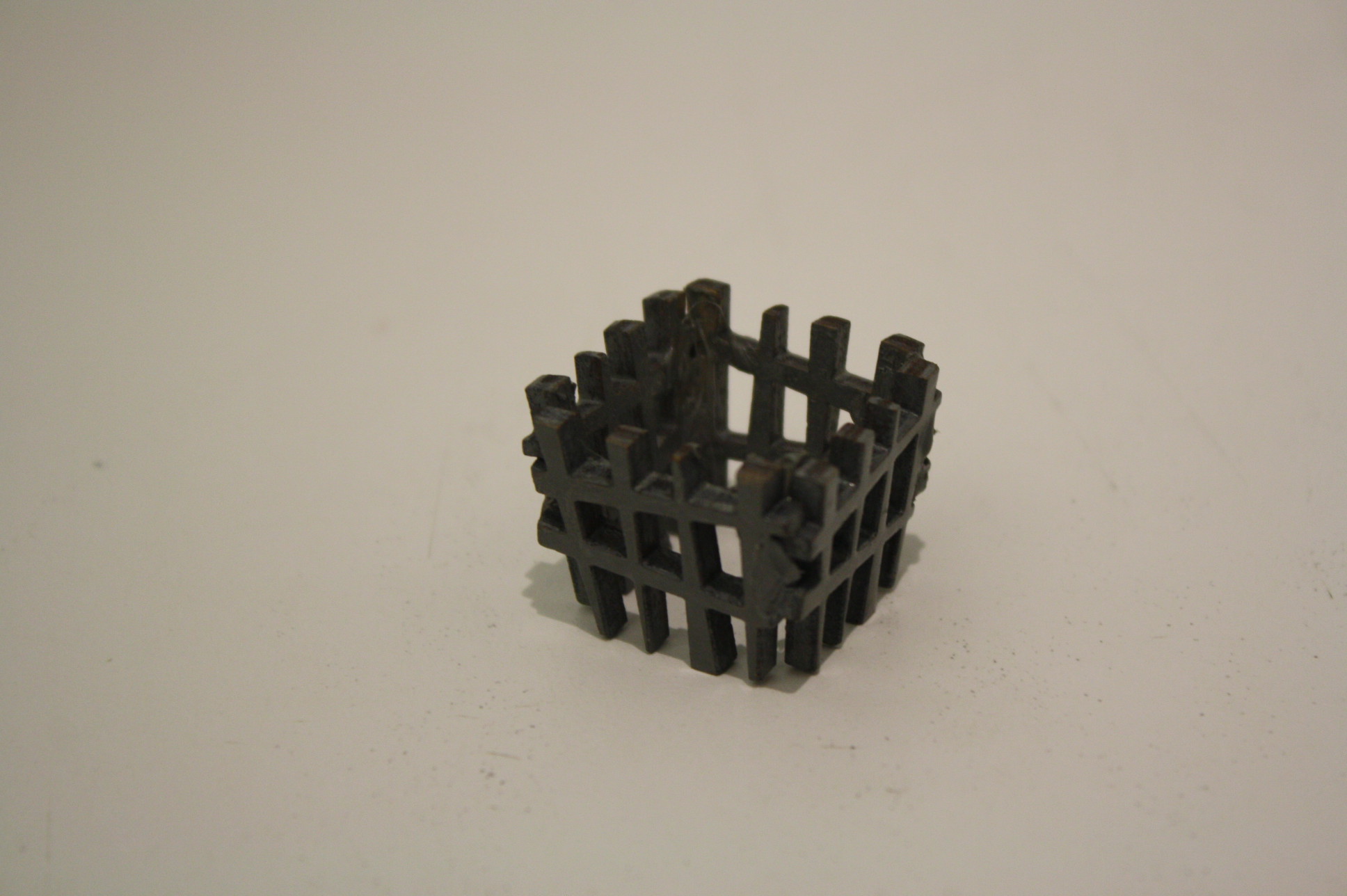
-
-
-
Pusher is set amidst shanties and rough streets.

-
Pusher identifies its figurines as “pushers” and nothing else.
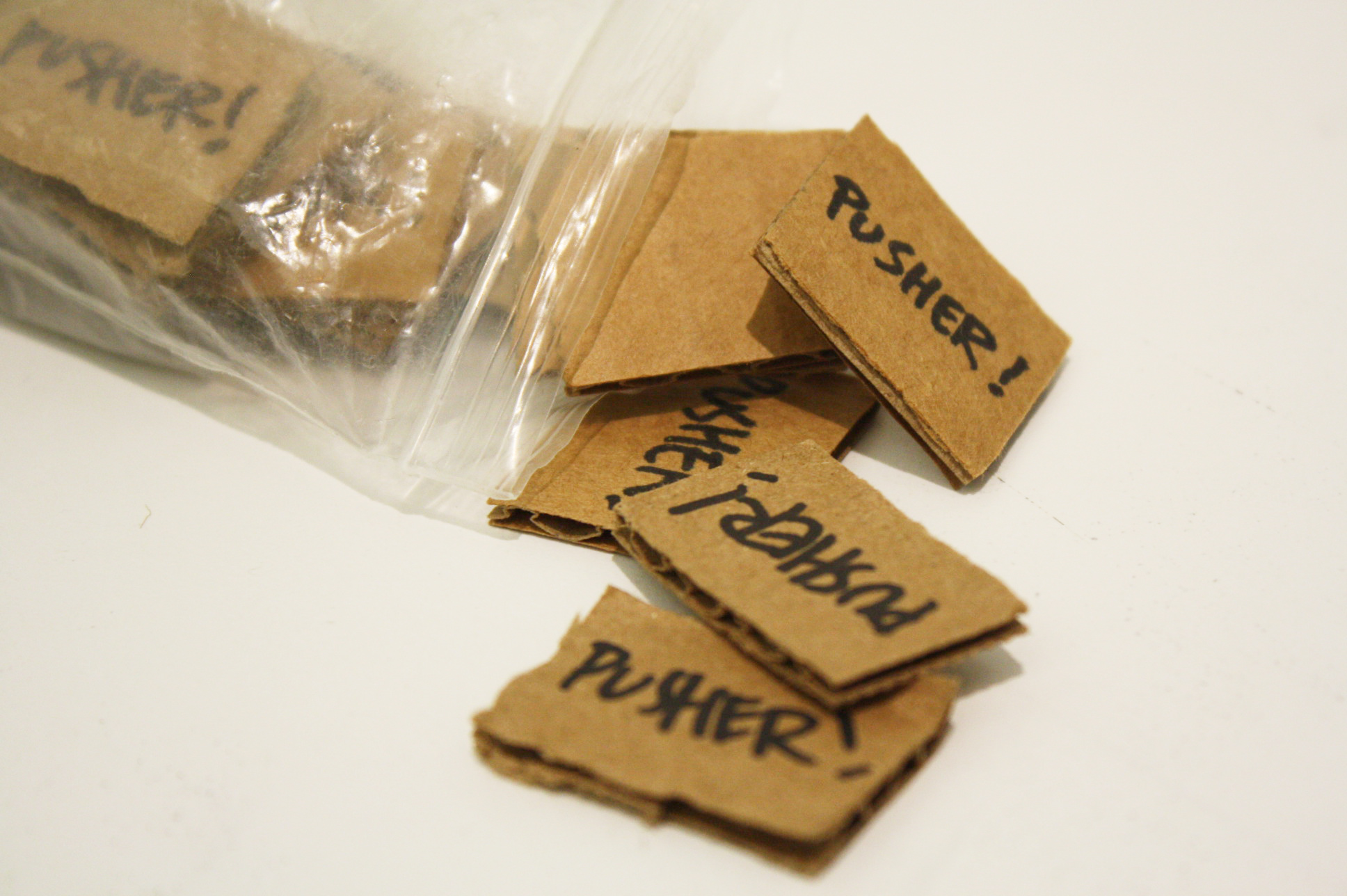
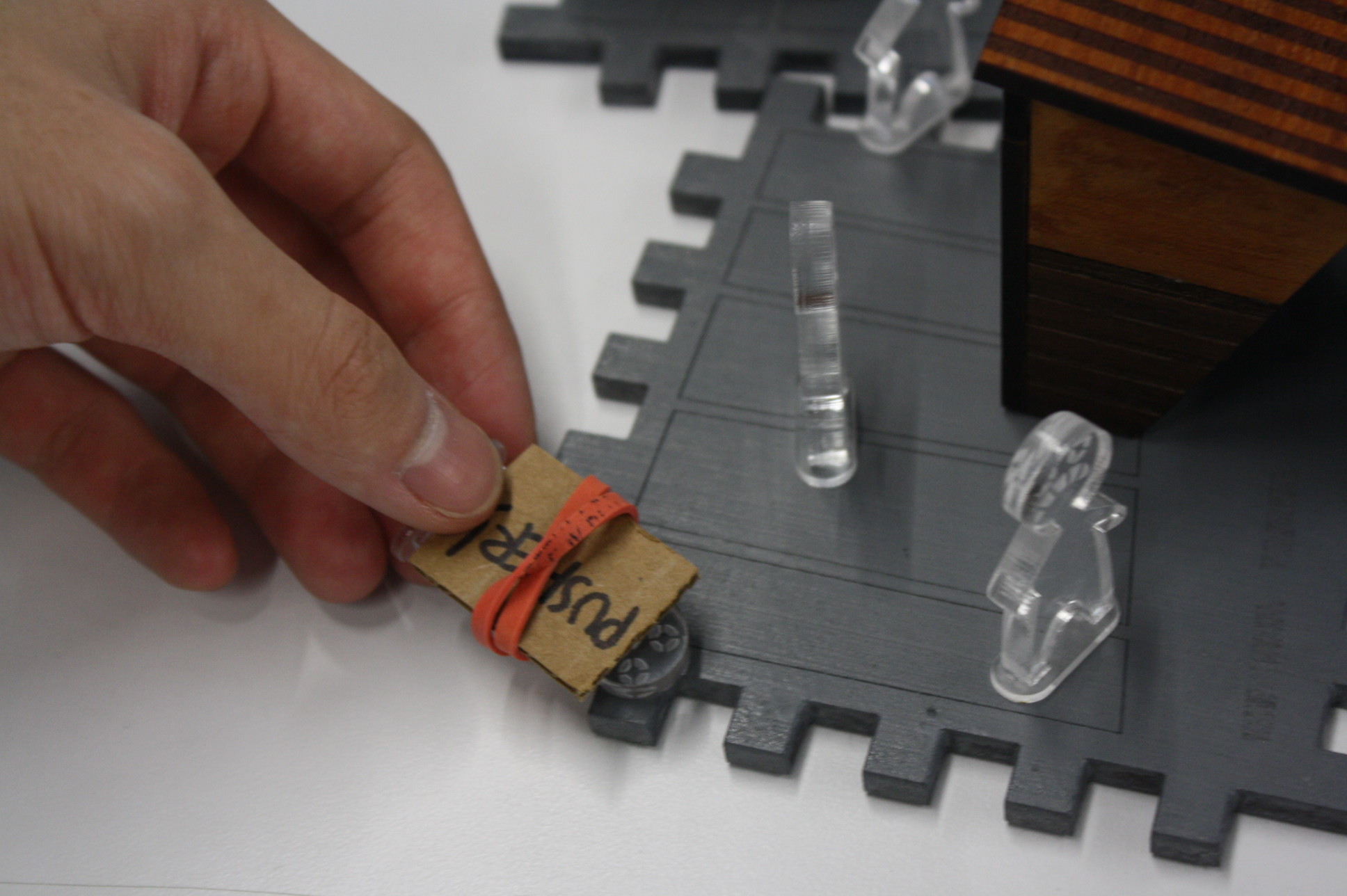
-
Pusher deliberately omits rehab centers and hospitals.
Pusher takes inspiration from President Duterte’s calls “to protect the next generation” by killing addicts to create a colorful game that normalizes extrajudicial killing. It is a game from a society that sees killing as the answer to a systemic problem. Pusher sugarcoats institutional violence.
For play-testers not aware of the killings, Pusher starts out fun. Below are players not initially told what Pusher is about, other than that it’s a game.

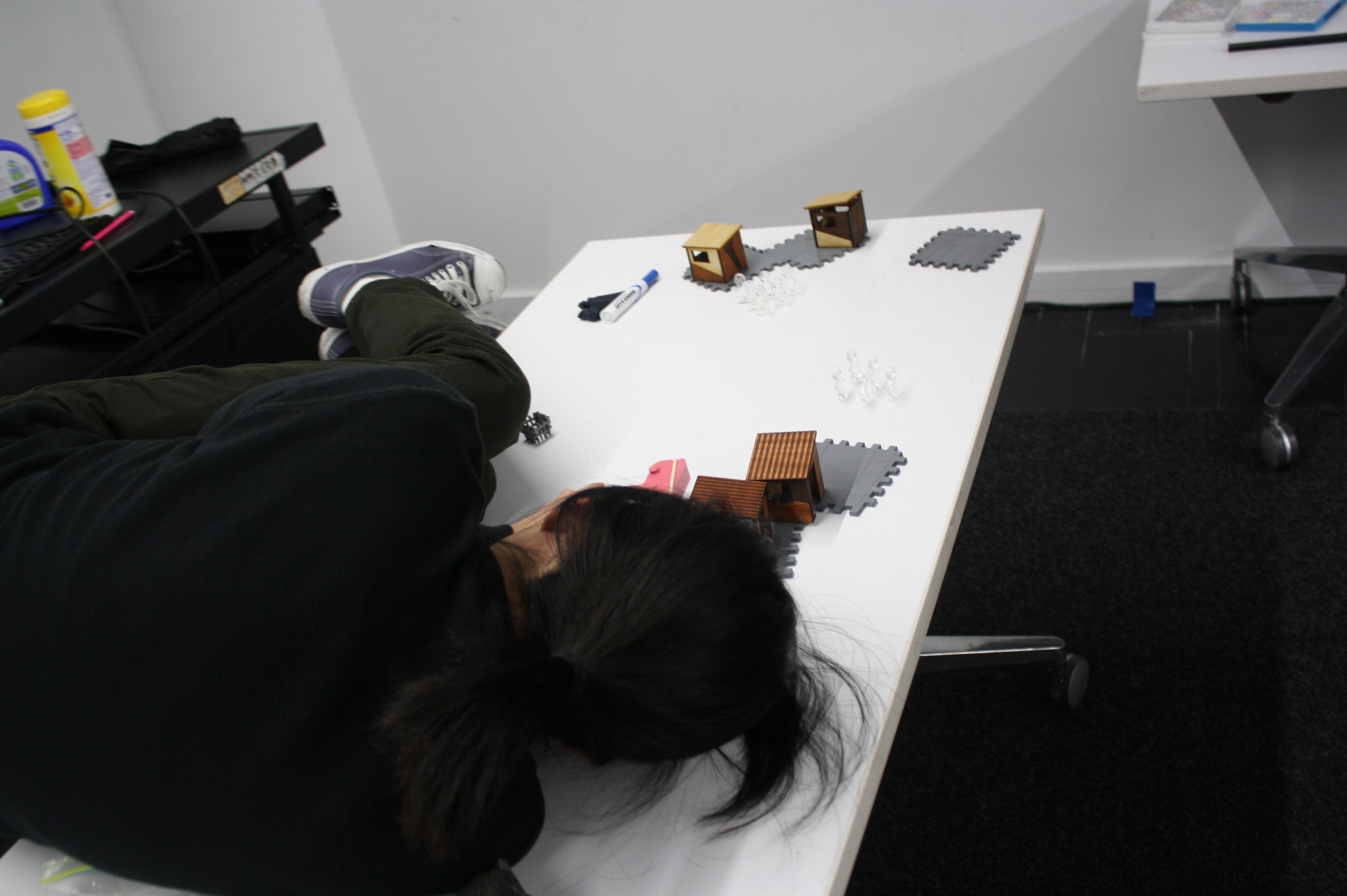
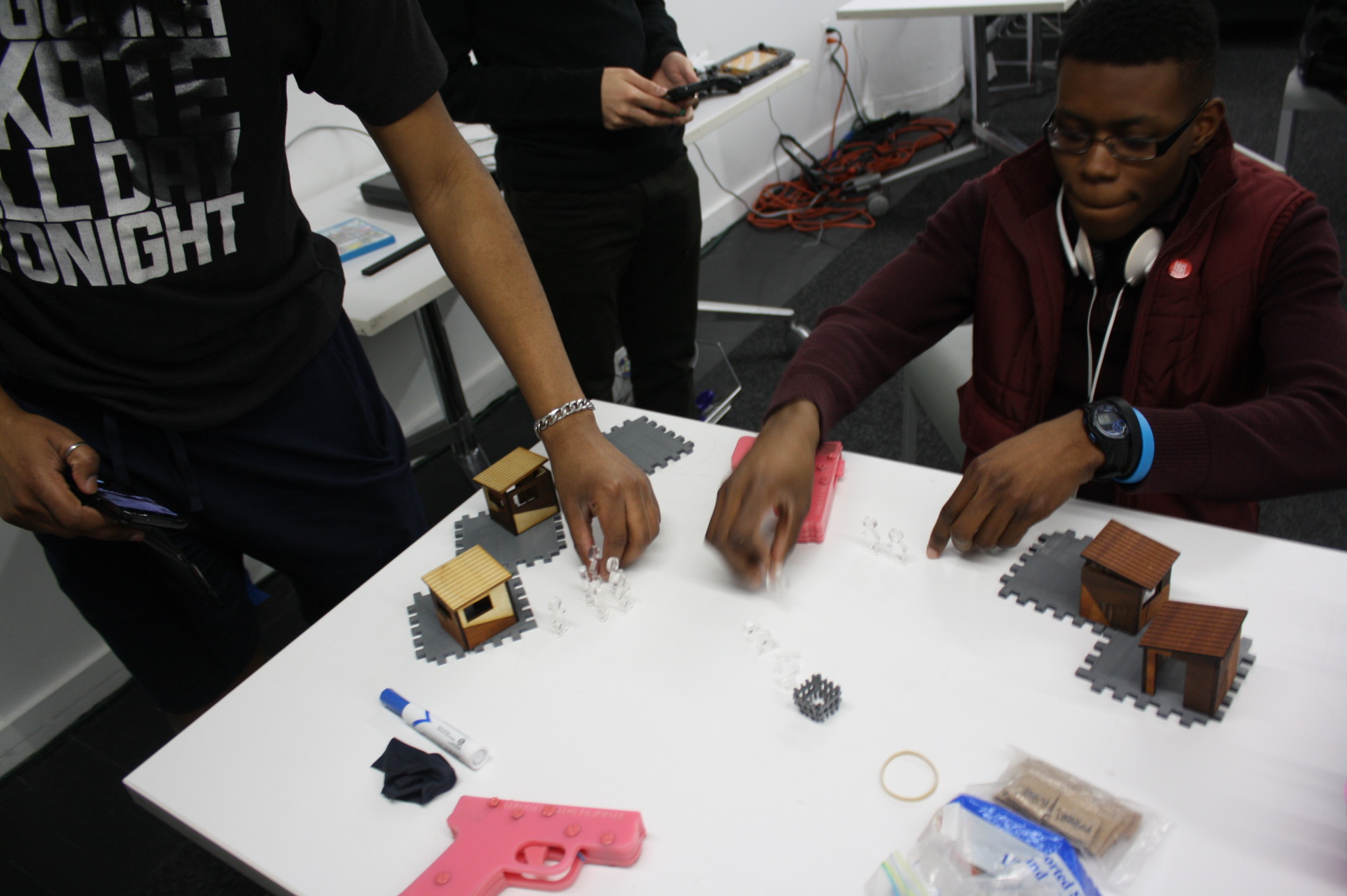
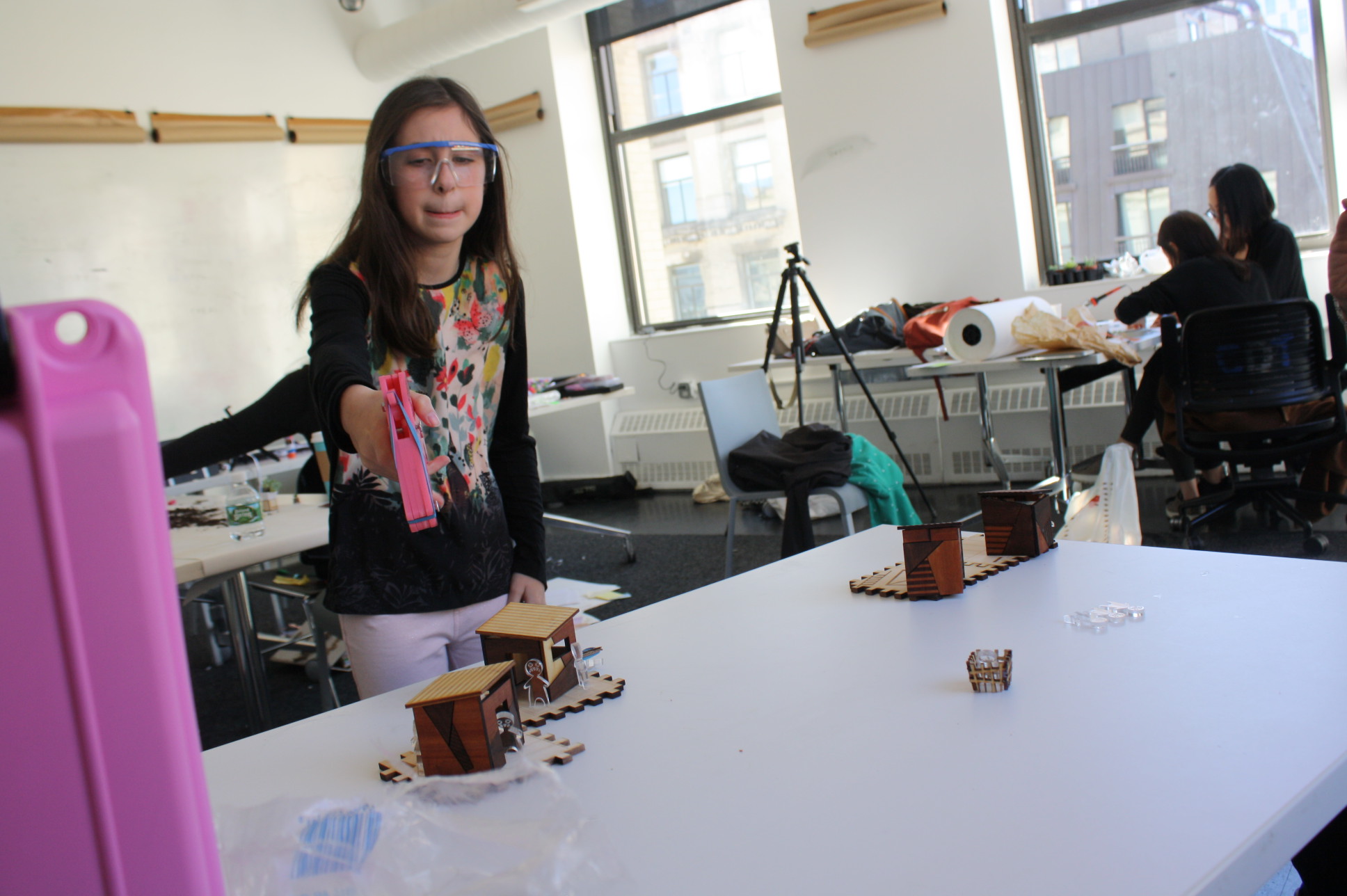
-
The young girl in the above photo played with her mother, a teacher aware of the killings and who consented to her daughter playing. After the game, her mother told her, "There are places in the world where, if you are a drug addict, you are murdered, and your body is left on the street where everyone and your family will see you. And a sign is left on your body." Her daughter's response, after a wide-eyed pause, was, “Oh. I don’t want to play this game anymore.”
Other reactions are relaxed. One player suggested other ways to kill Pushers, like drowning. For most players, enjoyment turns into dismay after Pusher’s roots are revealed.
Pusher began as a charge to present Philippine audiences an extreme outcome of a culture of violence. In practice, through carefully facilitated play-testing, it developed an educational quality. While dressed as a children’s game, Pusher is meant to be played by persons ages 13 and above, with younger persons requiring guidance and assistance from willing adults.
-
A “humane” component where players could put Pushers into rehab instead of imprisoning or killing them was originally built into Pusher. It was removed to maintain the spectacle of a game about killing. After receiving feedback from players for less violent goals, the humane component was restored in a separate build.
Introducing Pusher: Human Rights Edition.

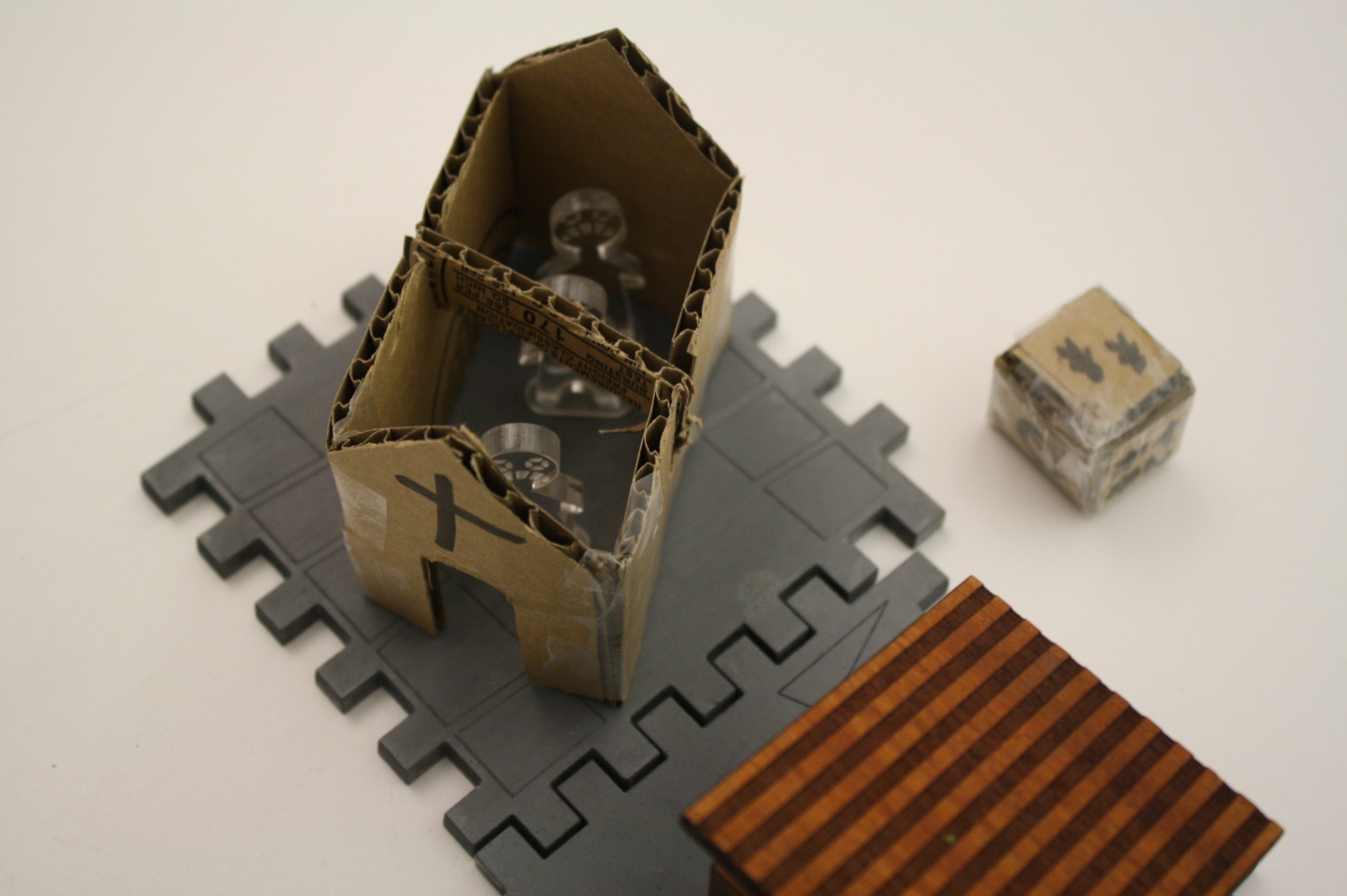
-
In place of guns and prison are a "Health Center" and "Spiritual Center" where players race to relocate Pushers. The centers are made of cardboard and tape, laughably poor materials compared to the polished plexiglass guns, wooden prison, and wooden shanties. This reflects the drug war's lack of priority for humane solutions.

-
A six-sided cardboard dice, the “Budget,” determines whether players can afford to bring Pushers into their centers, or kick them out due to lack of budget. The Budget has outcomes where more Pushers appear on the street.
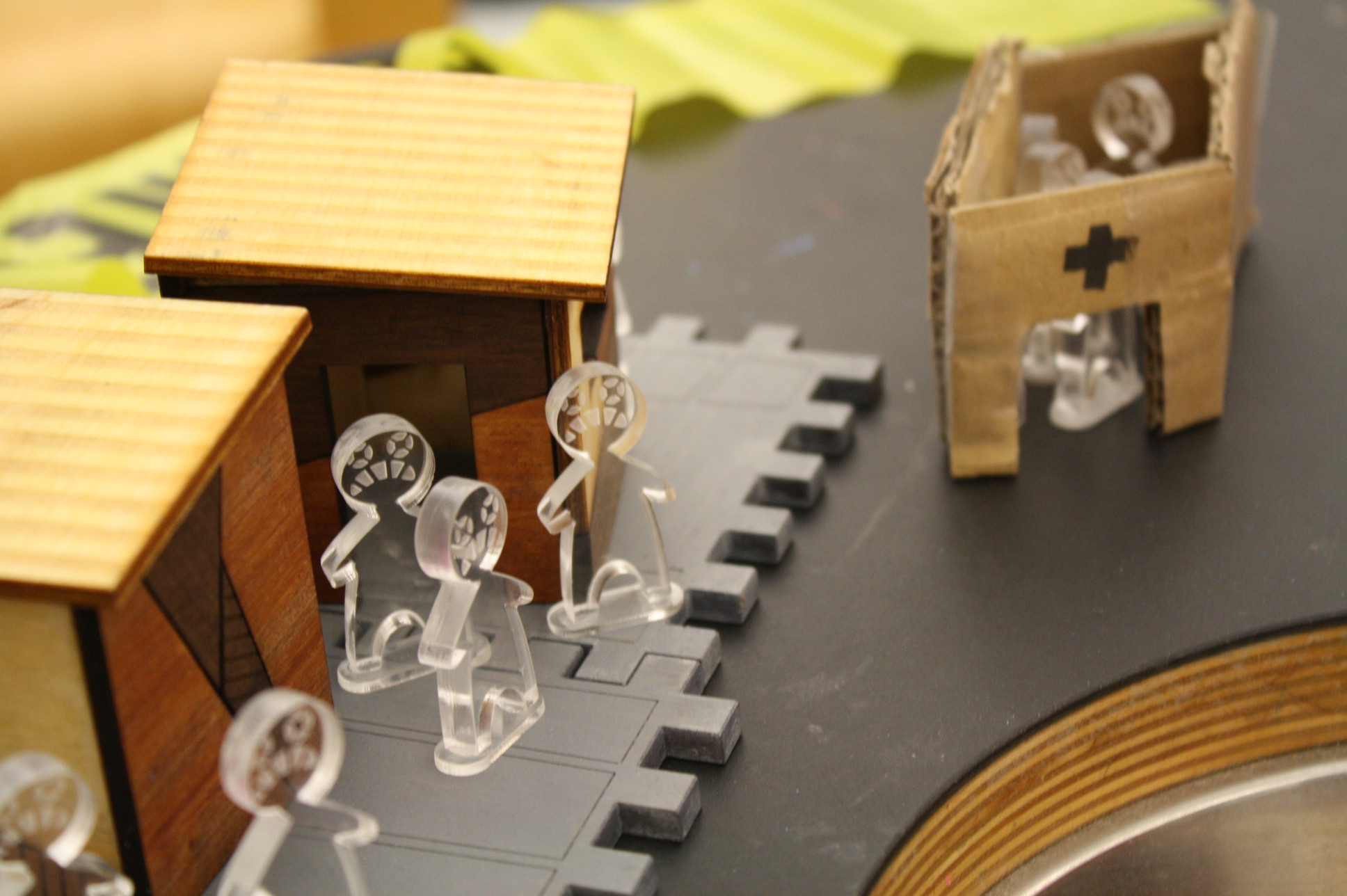
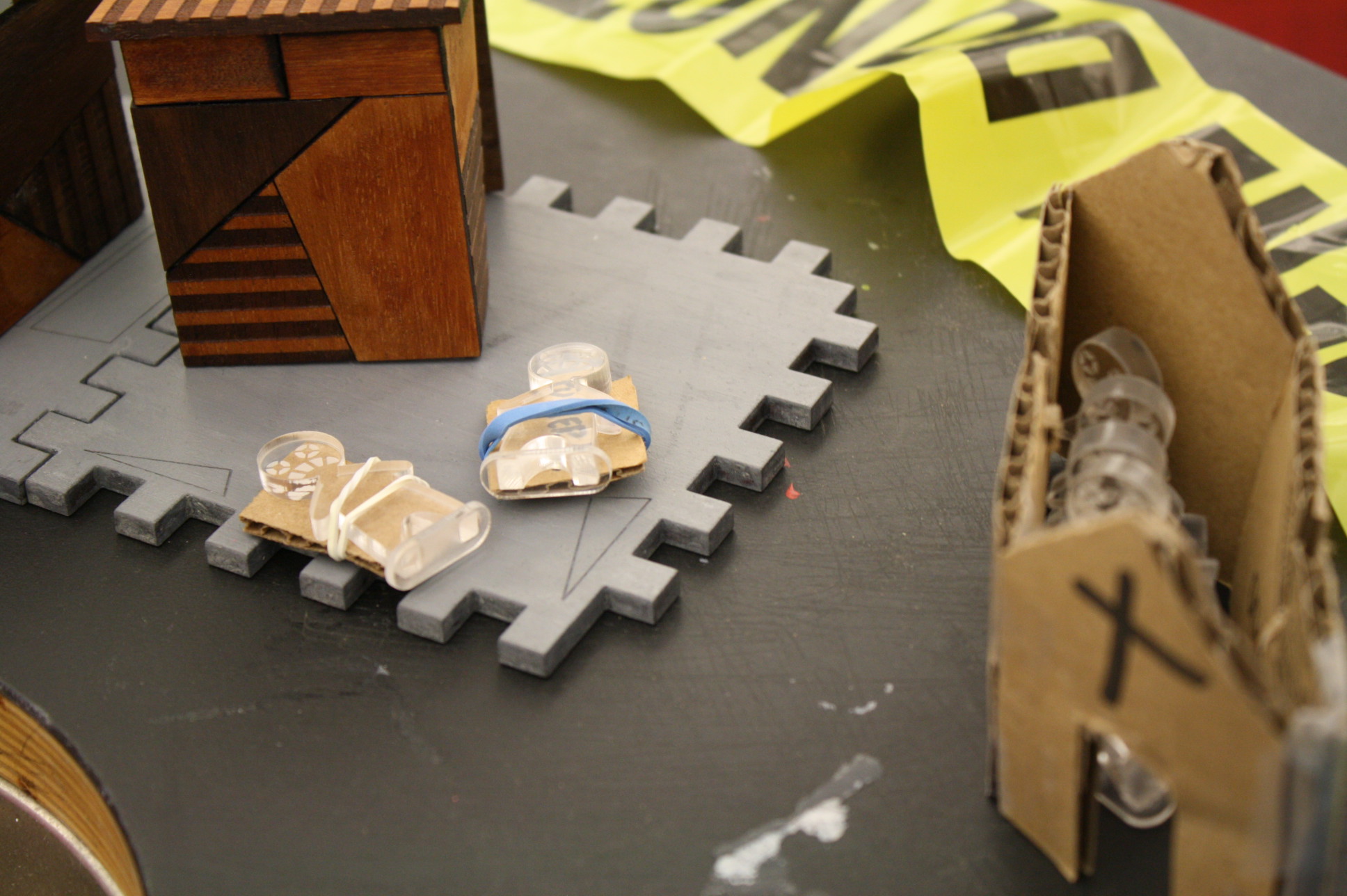
-
As Human Rights Edition progresses, the streets become filled with Pushers despite players’ efforts to relocate them in the Health Center and Spiritual Center. These centers soon become crowded.
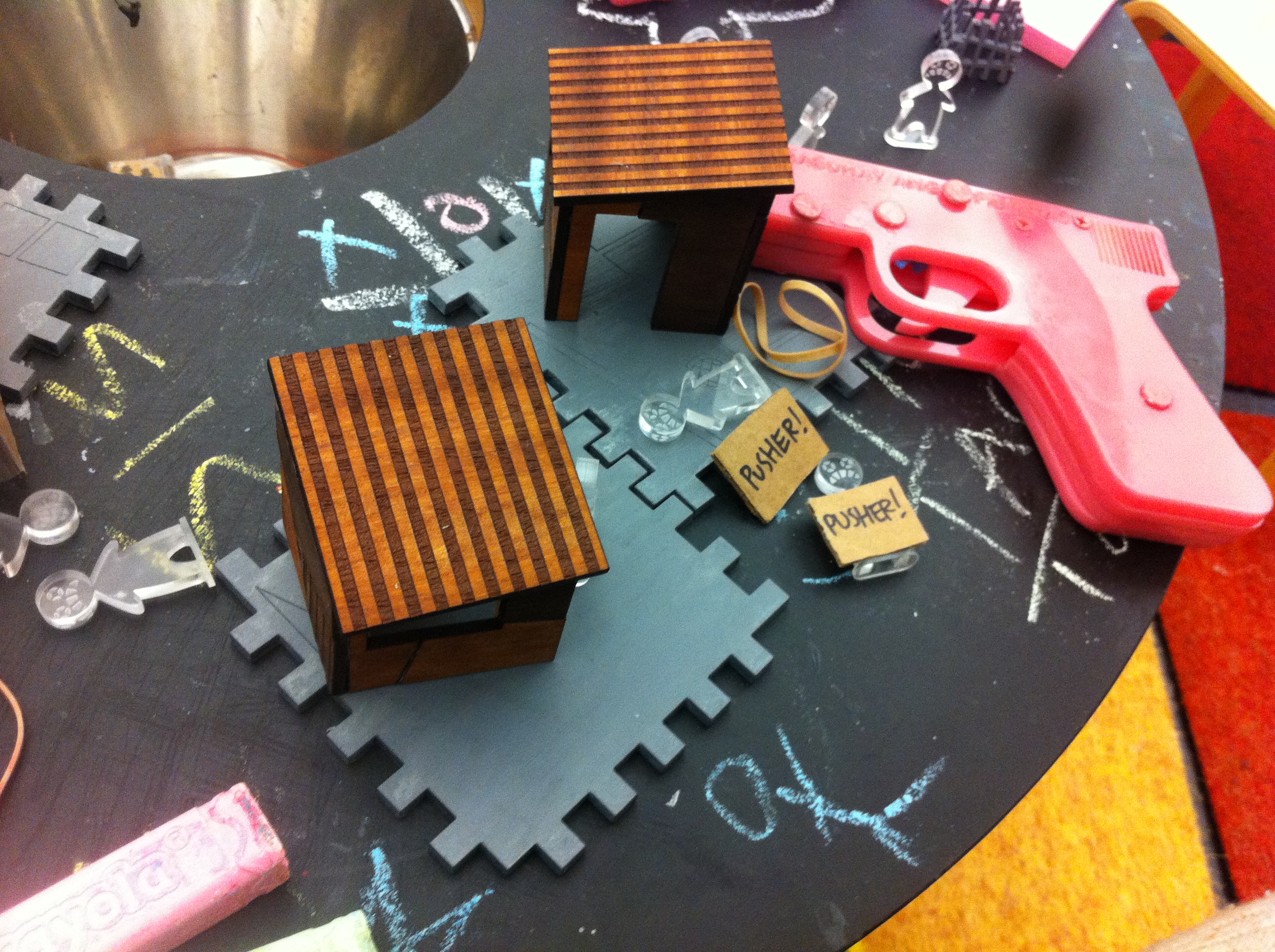
-
Pusher: Human Rights Edition foregoes killing, but still illustrates that there are numerous drug-afflicted persons in need of care and rehab, if policies and budget can make it happen.
-
Pusher has become a game with two different paths to reducing the number of drug-afflicted persons on the street. Pusher continues to be iterated on, as more players reflect thoughtfully on its gameplay and the systems it embodies.
-
